Vol. 2, Issue 67 - January / February 2017
Posted: Monday 16th January 2017
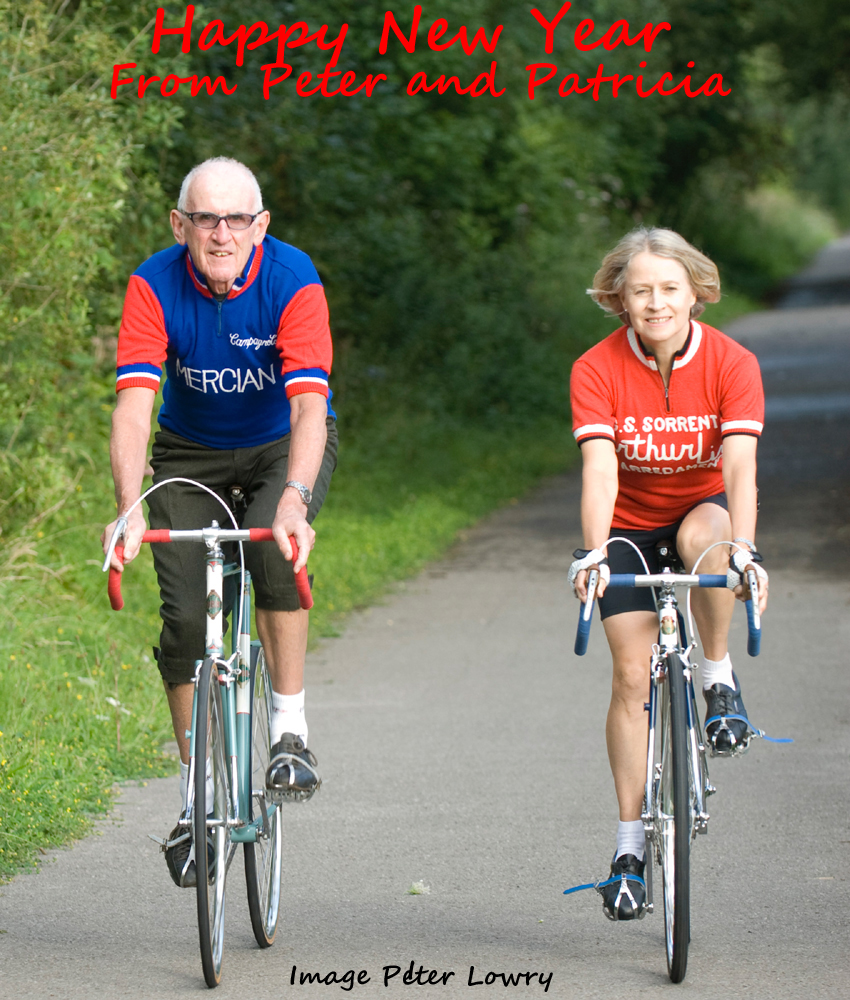
HAPPY NEW YEAR
The Classic Cyclists New Year Quiz, 2017
Attempt all 25 questions. Each question counts 2 marks. Answers and score ratings at the end
Compiled by Geoff Waters
1. The first name of Beryl Burton’s daughter who, as a top woman cyclist in her own right, represented Britain and won a bronze medal in the women’s individual pursuit at the 1975 UCI world championships in Liège, Belgium, is:
a) Deidre
b) Deborah
c) Denise
d) Diana
2. What is the name of the leading 20th century classic British steel lightweight brand hidden in the following anagram?
LURE BAD CULT
3. Cycling magazine’s longstanding touring and ‘rough stuff ‘ correspondent, Rex Coley, wrote under the pen name of:
a) Kuklos
b) Wayfarer
c) Ragged Staff
4. Which ONE of the following did NOT produce a lug set for lightweight steel frame building?
a) Oscar Egg
b) Prugnat
c) Empress
d) Farrago
e) Bocama
5. At which pre-WWII Empire Games was a mass-start road race FIRST included in the cycling events?
a) Edmonton 1930
b) London 1934
c) Sydney 1938
6. In 1955, the first British national team consisting of ten riders participated in the Tour de France. Which TWO of the following ten team members successfully completed the race?
Dave Bedwell – Tony Hoar – Bob Jones – Fred Krebs – Bob Maitland – Ken Mitchell – Bernard Pusey – Brian Robinson – Ian Steel – Bevis Wood.
7. Who was the champion track cyclist after whom the steel handlebar stem with an adjustable underslung handlebar clamp allowing the stem length to be varied was named?
a) Toni Merkens
b) Major Taylor
c) Hubert Opperman
d) A.A. Zimmerman
8. Which ONE of the following Milanese steel lightweight frame builders was located under one of the bankings of the Vigorelli velodrome?
a) Sante Pogliaghi
b) Cino Cinelli
c) Faliero Masi
d) Paolo and Italo Guerciotti
e) Marco Rossin
9. In his historical account, The Tour de France, Peter Clifford wrote of the 1959 Tour:‘Hero of the stage to Grenoble had been the English rider ………………, who steadily threaded his way up through the field to ride up the Romeyère in third place behind the “Eagle” and the “Angel”’ (p.153).
Who was this English rider?
a) Brian Robinson
b) Alan Ramsbottom
c) Arthur Metcalfe
d) Vic Sutton
10. Which classic British lightweight builder created the SBU ‘Tracker’ frame with an extended down tube and triangulated rear triangle which facilitated a shorter wheelbase?
a) Sun
b) Holdsworth
c) Viking
d) Carlton
e) Dawes
11. Which ONE of the following did NOT produce alloy sprint rims?
a) Fiamme
b) Gibello
c) Nisi
d) Martano
e) AVA
f) Weinmann
12. Which manufacturer produced L-shaped cranks, claiming that they increased power output by improving leverage?
a) TA
b) Zeus
c) PMP
d) Williams
e) Magistroni
13. Which noted British publisher of books on cycling is concealed in the following anagram?
PUSH SOME SOLDER
14. In the 1948 London Olympics, who was Alan Bannister’s partner on the tandem when they finished second in the tandem match sprint track event?
a) Tommy Godwin
b) Lloyd Binch
c) Reg Harris
d) Bill Maxfield
15. In which ONE of the following countries was the ‘Dulux Tour’ road stage race held annually over six days during the period 1960-1985?
a) South Africa
b) Canada
c) Australia
d) New Zealand
16. What is the surname which is contained in the following anagram of a leading French pro roadman of the 1950s who finished 2nd in the 1951 Tour de France and 3rd in 1958 and then became a successful pro team manager?
IMAGINE IN
17. The country in which the ORBEA brand of steel lightweights was manufactured is:
a) Spain
b) Belgium
c) Switzerland
d) Portugal
18. Which ONE of the following Continental one day road races is not considered to be one of the FIVE ‘monuments’ in the sport?
a) Milan-San Remo
b) Tour of Flanders
c) Liège-Bastogne-Liège
d) Paris-Tours
e) Tour of Lombardy
f) Paris-Roubaix
19. The term ‘demi-fond’ refers to which ONE of the following types of track racing event?
a) Match sprint
b) Pursuit
c) Motor paced
d) Time trial
e) Madison
20. In 1932, Alfredo Binda won the world pro road championship on a ‘Vittoria Margherita’- equipped machine. The ‘Vittoria Margherita’ component was an Italian version of the:
a) Osgear gear changer
b) Centre-pull brake
c) Quick release hub
d) Tubular tyre
21. In which year did the French regional rider, ROGER WALKOWIAK, of the ‘North-East Centre’ team win the Tour de France?
a) 1955
b) 1956
c) 1957
d) 1958
22. Which ONE of the following British framebuilders constructed the machine ridden by the USA’s Audrey McElmury when she won the 1969 UCI Women’s World Road Championship in Brno, Czechoslovakia, where Britain’s Bernadette Swinnerton was second?
a) Johnny Berry
b) Bill Hurlow
c) Mal Rees
d) Alan Shorter
e) Jack Taylor
23. Which ONE of the following was an alloy lightweight accessory manufactured by COLORAL of Birmingham, England ?
a) Racing pump
b) Mudguards
c) Water bottle
d) Flint catchers
24. The classic Italian ‘Baracchi Trophy’ road time trial between 1949 and 1990 was an event exclusively for:
a) Individuals
b) Two-man teams
c) Four-man teams
25. Which TWO of the following were not sponsors of Italian professional teams during the classic era?
a) Atala
b) Brooklyn
c) Bianchi
d) Carpano
e) Carrera
f) Chateau d’Ax
g) Chiorda
h) GIS
i) KAS
j) Legnano
k) Molteni
l) Nivea
m) Olmo
n) Super Ser
o) Wilier
THE CLASSIC CYCLIST’S NEW YEAR QUIZ, 2017
Answers and score ratings at the end
——————————————————————————
My name is Ronald Schmude, I’m from Berlin, Germany.
I’m a fan of your Classic Lightweights UK page. I love to collect and restore British classic lightweights. I have a 1956 Claud Butler Avant Coureur, a 1951 Claud Butler De Luxe Tourers, a 1956 Hobbs Blue Riband, a 1956 Claud Butler Olympic Sprint, a 1963 Holdsworth Hurricane. For my actual mid-1950s A.S. Gillott restoration I search for a metal head badge. Is it possible that anyone can offer me one to finish the restoration?
Alan Woods and Rick Hart – authors of the Johnny Berry page on the website, under ‘Classic Builders’ sent me this email which shoes how the international coverage of the website can work to the benefit of all:
“A long time ago, you asked me to write an article about Johnny Berry for the Classic Frame Builders section of ClassicLightweights.co.uk. I wrote the first draft in March 2011, and revised it in November 2014. The response has been very positive, giving me the opportunity to correspond with Berry enthusiasts in Asia, Europe, and North America, learn a lot, and make new friends.
Between November 2014 and December 2016 enough new information has become available to warrant revising and expanding the Johnny Berry article again.
Since 2014 the number of Johnny Berry frames that are known (to us) has more than doubled from 31 in November 2014 to 70 in December, 2016. Seventy frames is equivalent to about 8% of the frames that Johnny Berry built under his own name from when he opened his shop in 1946 until he died in 1974. Seventy frames is enough, I think, to serve as a pretty good sample, allowing inferences to be made about Berry’s building styles, production rates, etc. through time.
Rick Hart of Urmston, Manchester has generously supplied photographs, links, and, in some cases, access to many of the Johnny Berry frames that have come to light. Rick is a Berry enthusiast, V-CC member, and the owner of the 1954 Johnny Berry road/path that appears in the Readers’ Bikes section of CL. Both Rick and I own several Johnny Berry bicycles. We have corresponded about Johnny Berry since 2012. I was lucky enough to visit him and see his Berry-made bicycles after Eroica Britannia in 2015.”
Alan Woods is based in the States.
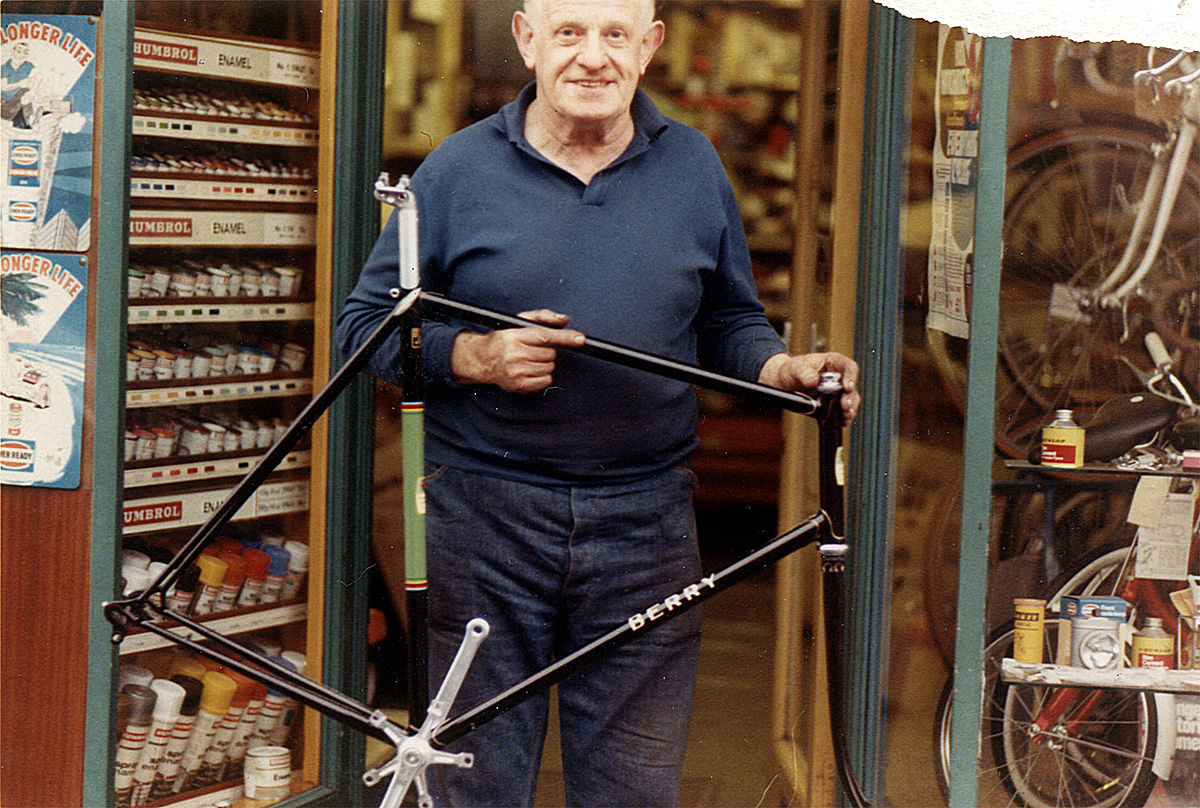
The last edition of Lightweight News contained a reply about the ‘out of sync’ crank positioning, something I’ve been meaning to write to you about for some time.
In the late 1980’s I was a regular tandem time-triallist with a variety of clubmates on the back depending on who was available for each event. One evening, prior to riding a club 25 on the Wakefield – Doncaster road (a course not noted for its dragstrip qualities!), I had to make some hurried minor adjustments to the eccentric bottom bracket (the front chain was running a bit slack on the straight-through drive we used) and I virtually threw the front chain back on to get to the start in time. I was riding with one of my more regular partners as stoker (I was always at the front – I wanted at least some control over my destiny!) who was always a smooth pedaller, almost as if it was a solo I was riding. The ride on this ‘lumpy’ course went very well, we were flying, pedalling seemed like the proverbial ‘hot knife through butter’ and I couldn’t believe our time – and neither could the timekeeper.
We did a ‘long 53’, way better than anything done before by a tandem on the course and, setting off last, we had caught virtually the whole field. It wasn’t until we were changed and clearing away that someone commented that there appeared to be something wrong with our cranks. When we looked, they were out of sync, not a lot, probably about 20 – 25 degrees but this was obviously enough to smooth out the ‘top dead centre’ effect and provide the fluidity of pedalling that we experienced. Looking back, we didn’t try the ‘experiment’ again but perhaps we should have – and set a trend! In retrospect, I reckon tandem time-trialling gave me the most satisfaction I ever experienced in my racing ‘career’. I could never have gone so fast on my own!
On another subject, I think, with many regrets, I may have to cut down my bike collection. I’ve had some health problems over the past 18 months or so and my active cycling has drastically reduced (at present I’m actually not too bad but other interests have entered my life) so I feel that other people might get more use out of them. I would probably part with a Vitus Duralinox aluminium machine from ’86, possibly the ’72 Dave Russell (the dark blue one) which I have never actually ridden since putting it together and perhaps a couple more if the price is right. They are nominally 56cm/23″ size. Could you ask that anyone interested e-mail me? I’m in no hurry to get rid but I would like them to go to appreciative new homes complete rather than be dismantled and sold on as parts as often happens.
Paul Gittins email: paulandkayg@talktalk.net
Gary Birditt thought we may be interested in the following video on the new Paris Galibier: https://cyclingtips.com/2016/11/bikes-of-the-bunch-paris-galibier/
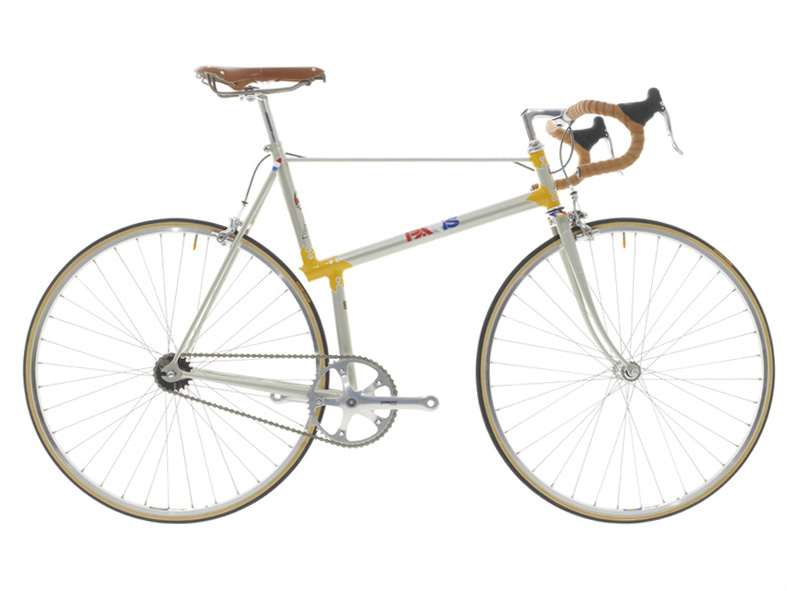
I was interested to find some information on Allin Cycles on your website. I have a complete bicycle that a good friend of my father’s gave to me about 25 years ago. He told me it was an Allin that he had bought new in the 1960`s.
The frame number puzzled me a bit as of the way it is stamped I never knew if it was 4771 or 1774, but going by the information on your website, and my knowledge of the rough age of the frame, it cannot be 4771, if it is 1774 that makes it the one built before your “Allin (Stan Butler Special) Belgique (Frame no. 1775)”
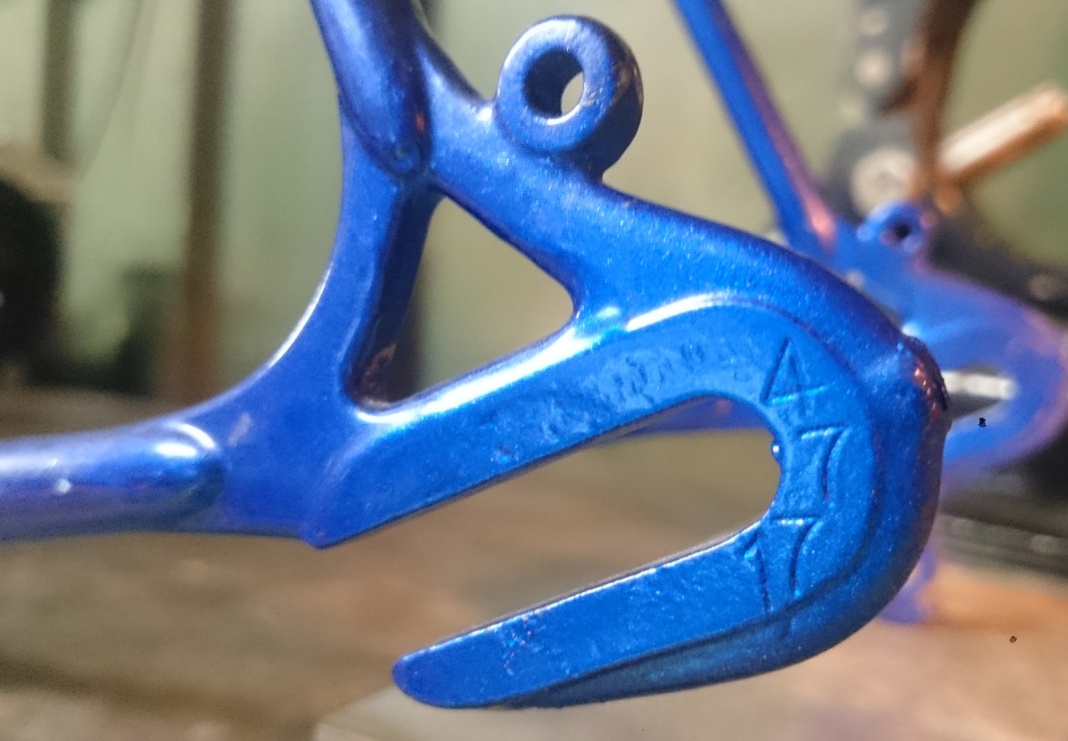
I made the same mistake about the numbering when I first acquired an Allin. Having swapped a late one for a Buckley Bros frame, I still own 1242 which I think was made around 1957. I am sure from what you have deduced yourself, you are correct about the date. It certainly looks right for the period.
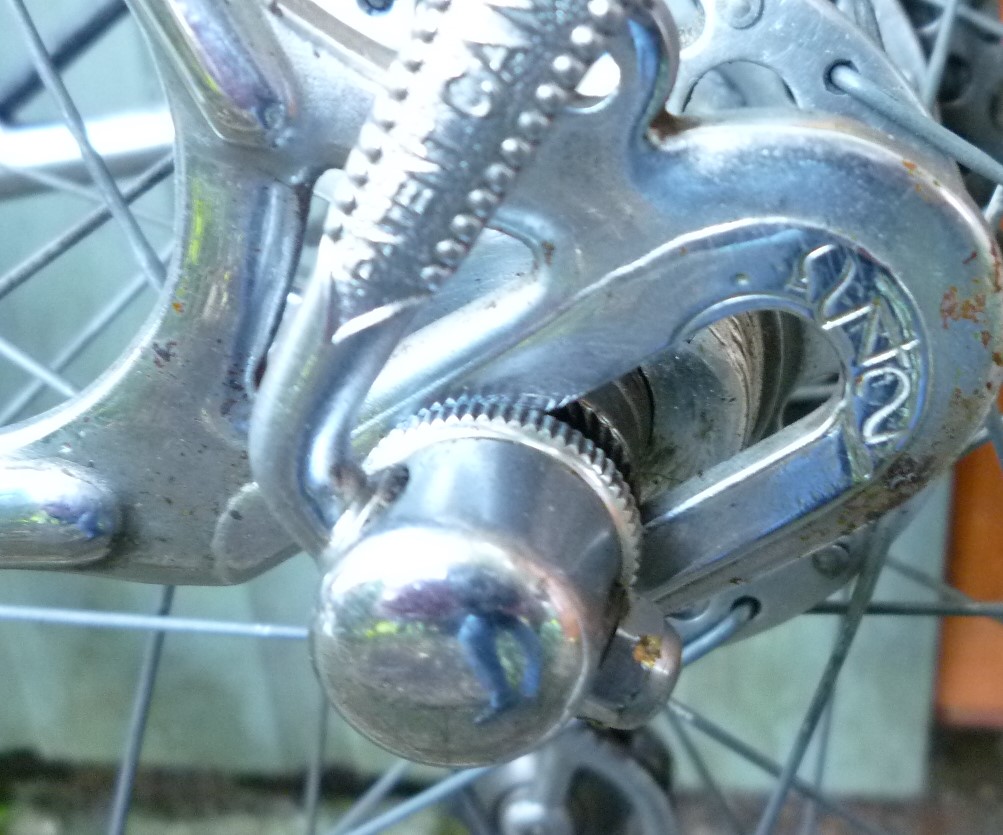
Ed: One problem with numbers stamped on the rear ends is that they can get chewed up by constant ‘grinding’ from track nuts, luckily this example is still as clear as the day it was stamped. If the frame was used for fixed-wheel riding it is rare for the wheel to be at the extremes of the ends. This frame has a boss brazed on the drive side and it looks as if it could be a later addition.
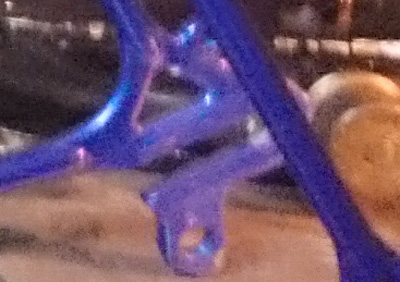
2017 Classic cycling quiz (50 marks)
Answers (2 marks for each correct answer)
1. c) Denise.
2. CLAUD BUTLER.
3. c) Ragged Staff (Kuklos [Greek for wheel] was William F. Wray; Wayfarer was Walter M. Robinson – both were noted earlier writers on cycle touring and rough stuff).
4. d) Farrago (literally, this means ‘a heap of nonsense’).
5. c) Sydney 1938 (won by Hennie Binneman, South Africa, with New Zealander John Brown second and England’s Ray Jones third).
6. Brian Robinson 29th overall; Tony Hoar 69th overall and Lanterne Rouge.
7. b) The African-American 1899 1mile sprint world champion, Major Taylor.
8. d) Flaminia (the ‘Via Flaminia’ was the main ancient Roman road leading north from Rome).
9. d) Vic Sutton (who finished the race 37th overall; Brian Robinson was 19th. Both were in the ‘International’ team).
10. c) Viking.(’SBU” = ‘Short Wheelbase Underslung’).
11. b) Gibello (This is the local Sicilian name for the Mt. Etna volcano on the island).
12. c) PMP. The results were disappointing and the revolutionary claims not proven.
13. Mousehold Press of Norwich.
14. c) Reg Harris. They raced on a Claud Butler tandem and the event was won by Renato Perona and Ferdinando Teruzzi of Italy with France’s Gaston Dron and Rene Faye third.
15. d) New Zealand.
16. GEMINIANI, Raphael
17. a) Spain.
18. d) Paris-Tours.
19. c) Motor paced.
20. a) Italian version of the Osgear gear changer; produced by the firm of Nieddu Brothers in Turin.
21. 1956.
22. a) Johnny Berry of Rusholme, Manchester.
23. c) Coloral. Aluminium water bottles were manufactured in Birmingham in the early 1950s. They had a cork stopper and were available in a variety of anodised colours.
24. b) Two-man teams. Winners with various partners are a ‘who’s who’ of pro cycling and include Magni, Coppi, Baldini, Anquetil, Merckx and Gimondi. (From its inception in 1944 to 1948 it was run as an individual TT and the last contest in 1991 was also an individual TT).
25. Both j) KAS and n) Super Ser were Spanish pro teams.
SCORES
40–50: Congratulations! You are an aficionado
30–39: Well done, but …
20–29: Puncture prone
10–19: Ahem!
<10: You are in the broom wagon!
Posted: Monday 16th January 2017
This article appears in the following categories.
Upcoming Events
Whether you are looking for a gentle social meet up, or a 100-mile ride browse the community’s upcoming events and plan your next weekend outing.
